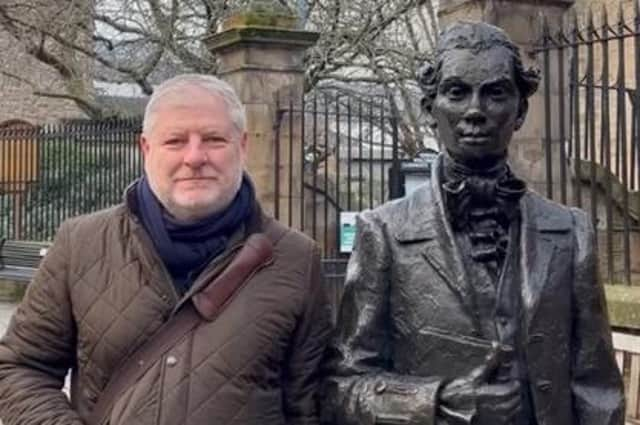Tragic young poet who was key inspiration for our national bard - Angus Robertson


Born on September 5, 1750 in Edinburgh, Fergusson’s name is etched deeply in the annals of Scottish poetry and literature. His legacy was immediate, a key figure in the 18th-century revival of the Scots vernacular and a foundational inspiration to Robert Burns.
Upon his tragically early death at 24, he was buried in an unmarked grave in the Canongate Kirkyard, outside of which his statue now stands. When told of this, Robert Burns was moved to pay for a headstone personally proclaiming Fergusson as, “my elder brother in misfortune; by far my elder brother in the muse”.
Advertisement
Hide AdAdvertisement
Hide AdLater, Robert Louis Stevenson – who was born almost exactly 100 years later – made plans to repair the headstone as “the gift of one Edinburgh lad to another”.
Fergusson’s works, Auld Reekie and The Daft Days, are explorations of the city and its zeitgeist, capturing the drama and intrigue emanating from the streets and closes of Scotland’s capital.
Indeed, the unique culture of Edinburgh was a source of satire, exposing the contrast of Edinburgh’s high society with the lives of the poor and vulnerable as well as exploring the city’s past and present.
Fergusson’s work offers a window into the soul of Edinburgh and Scotland, revealing the threads of humour, resilience, and community that are integral to our collective identity. In the contemporary context, Fergusson’s poetry serves as a reminder of the richness of Scotland’s linguistic heritage and the importance of preserving and celebrating it.
Advertisement
Hide AdAdvertisement
Hide AdFergusson gained popularity from 1771 onwards when his poetry was accepted in the Weekly Magazine or Edinburgh Amusement. The proprietor of these papers, Walter Ruddiman, recognised Fergusson’s talent and went on to publish all of his work, including collections after the poet’s death.
All of this is especially notable given Fergusson’s active writing period lasted about 18 months, from which a comparatively small literary canon exists. Yet, this was enough for him to be dubbed the “New Ramsay” after the poet and key enlightenment figure, Allan Ramsay.
Fergusson’s tale is one of tragic deterioration. His hefty drinking and the effects of disease sent him spiralling into anguish, affecting his life so much he lost his job. Not long after, he tripped, fell and hit his head, apparently while descending one of the closes off the Royal Mile.
While he survived, he never recovered his mental capacity and was admitted to the local Bedlam asylum – which stood where the Bedlam Theatre is today. Within weeks of languishing in a straw-lined cell, Fergusson perished.
Advertisement
Hide AdAdvertisement
Hide AdAs we enter this year’s Burns season, I think Scotland’s Bard would not only forgive but encourage us to research, read and recite the life and works of one of his heroes, Robert Fergusson. Who knows, without Fergusson and the revival of the Scots vernacular, perhaps Burns’ poetry would not have achieved its worldwide success.
Scotland owes the Edinburgh poet Robert Fergusson a huge debt of gratitude. In this 250th anniversary year of his death we should celebrate his work and legacy.
Angus Robertson MSP is Constitution, External Affairs and Culture Secretary